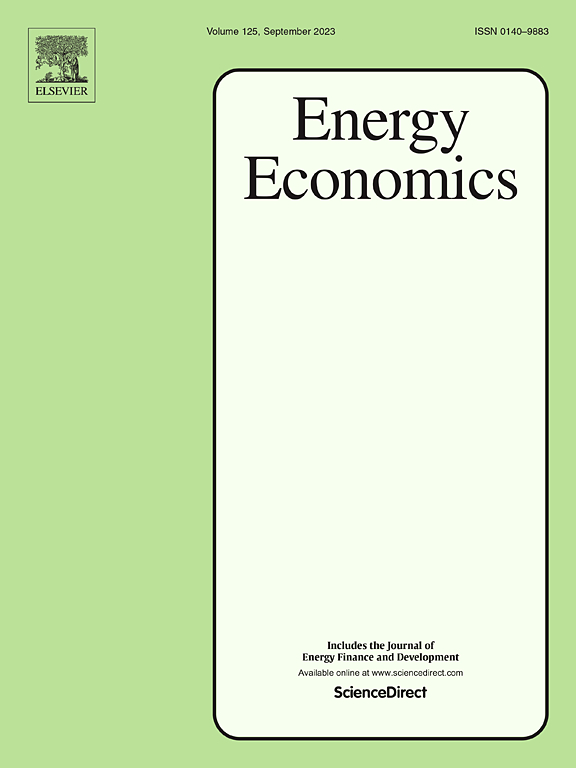Where to build renewables in Europe? The benefits of locational auction design
IF 13.6
2区 经济学
Q1 ECONOMICS
引用次数: 0
Abstract
The European Commission recently proposed a 90 % carbon emissions reduction target for the year 2040. Reaching this target will largely rely on decarbonizing the power sector through the deployment of variable renewables through auctions. At the same time, redispatch volumes across the European Union are forecast to increase massively in the context of uncoordinated renewable deployment.
Against this background, we investigate the benefits that can be achieved with locational auctions for renewable capacity, taking into consideration the grid topology in the auction clearing mechanism. We contrast the outcome against a zonal auction mechanism, as well as an equal distribution scenario, which describes a very even distribution of renewable capacity.
We find that across all investigated scenarios, locational auctions maximize renewable integration, while minimizing the cost to consumers. In addition, they consistently lead to lower redispatch volumes than zonal auctions. Redispatch, however, is minimal in the equal distribution scenario, due to the high shares of local consumption. We thus conclude that maximizing system benefit stands in conflict with minimizing redispatch in zonal markets. While the former relies on maximizing renewable production, taking grid constraints into consideration, the latter objective benefits from maximizing local consumption and minimizing strain on the grid.
在欧洲哪里建设可再生能源?地点拍卖设计的好处
欧盟委员会最近提出了到2040年碳排放量减少90%的目标。实现这一目标将在很大程度上依赖于通过拍卖部署可变可再生能源来实现电力部门的脱碳。与此同时,在可再生能源部署不协调的情况下,预计整个欧盟的再调度量将大幅增加。在此背景下,考虑到拍卖清算机制中的电网拓扑结构,我们研究了可再生能源容量的位置拍卖可以实现的好处。我们将结果与区域拍卖机制以及平均分配情景进行了对比,后者描述了可再生能源容量的均匀分布。我们发现,在所有被调查的场景中,地点拍卖最大化了可再生能源的整合,同时最小化了消费者的成本。此外,与区域拍卖相比,它们的重新分配量一直较低。但是,在平均分配的情况下,由于当地消费所占的份额很高,重新分配的可能性很小。因此,我们得出结论,在区域市场中,最大化系统效益与最小化再调度存在冲突。前者的目标是在考虑电网约束的情况下最大化可再生能源产量,而后者的目标则是最大化当地消费和最小化电网负荷。
本文章由计算机程序翻译,如有差异,请以英文原文为准。
求助全文
约1分钟内获得全文
求助全文
来源期刊

Energy Economics
ECONOMICS-
CiteScore
18.60
自引率
12.50%
发文量
524
期刊介绍:
Energy Economics is a field journal that focuses on energy economics and energy finance. It covers various themes including the exploitation, conversion, and use of energy, markets for energy commodities and derivatives, regulation and taxation, forecasting, environment and climate, international trade, development, and monetary policy. The journal welcomes contributions that utilize diverse methods such as experiments, surveys, econometrics, decomposition, simulation models, equilibrium models, optimization models, and analytical models. It publishes a combination of papers employing different methods to explore a wide range of topics. The journal's replication policy encourages the submission of replication studies, wherein researchers reproduce and extend the key results of original studies while explaining any differences. Energy Economics is indexed and abstracted in several databases including Environmental Abstracts, Fuel and Energy Abstracts, Social Sciences Citation Index, GEOBASE, Social & Behavioral Sciences, Journal of Economic Literature, INSPEC, and more.
 求助内容:
求助内容: 应助结果提醒方式:
应助结果提醒方式:


